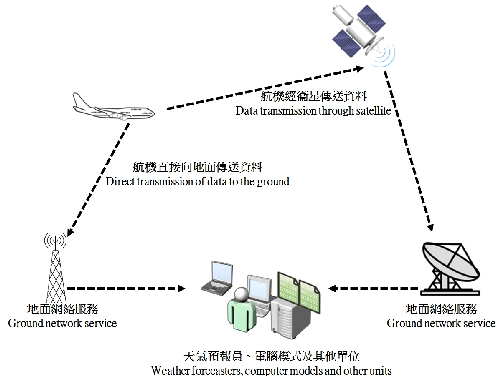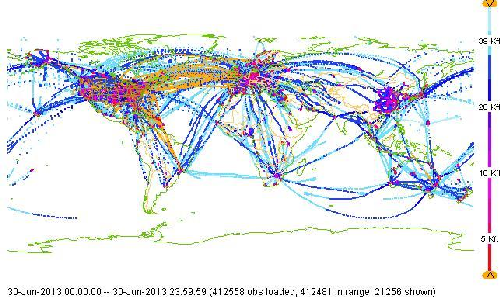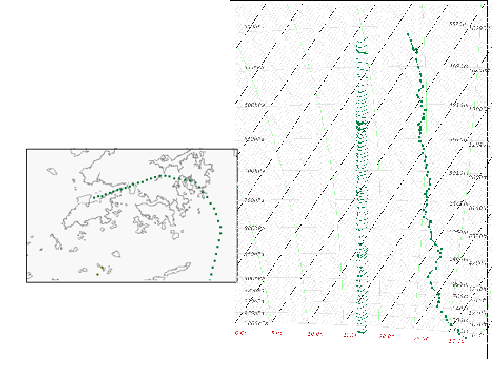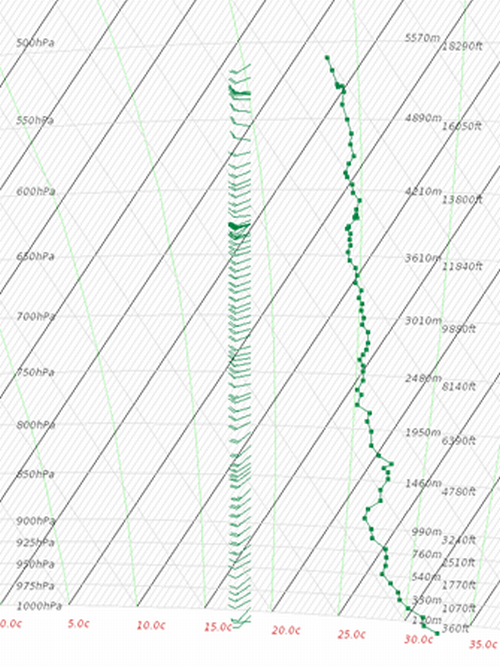Have you ever thought that the aircraft you fly is a vital source of meteorological data? This data collection project is part of the World Meteorological Organization Aircraft Meteorological Data Relay (AMDAR) programme. Participating aircraft, after installing a computer software, will regularly transmit the meteorological data collected in flight like wind speed, wind direction and temperature to the ground (Figure 1). Of course, one could also get the location of the aircraft from the data.

|
|
| Figure 1 | The transmission of data from aircraft participating in the AMDAR programme to ground users |
Weather forecasters can use these data (Figure 2) to analyze the weather situation more precisely, especially over regions such as the ocean where upper-air weather data are sparse. In addition, AMDAR is an important data source to numerical weather prediction models. Statistics[1] indicated that meteorological data provided by the AMDAR programme increased the accuracy of computer model outputs which in turn contributed to the improvement of weather forecasts.
| Figure 2 | Wind direction, wind speed and temperature data (diagram on the right) along the flight path (diagram on the left) provided by aircraft participating in the AMDAR programme |
Since 2004, the Hong Kong Observatory, in collaboration with the Cathay Pacific Airways, has been collecting the automatic meteorological data from commercial aircraft and distributes them to other meteorological centres all over the globe. The Observatory also developed a software in-house to detect the occurrence of windshear in real-time and to provide timely warnings to other aircraft by using the data from departing aircraft that have joined the Hong Kong’s AMDAR programme (Figure 3).
 | |
| Figure 3 | Windshear warning messages issued by the Airport Meteorological Office to aircraft |
Although a number of airlines have already participated in the global AMDAR programme, the existing coverage of the programme still has room to expand further, especially over ocean regions (Figure 4). Looking forward, the Hong Kong Observatory will further promote the programme to obtain more aircraft weather observations.

| Figure 4 | Global coverage of AMDAR programme at the end of June 2013 (Source of data: World Meteorological Organization[1]) |
Reference:
- The benefits of AMDAR data to Meteorology and Aviation, World Meteorological Organization, Commission for Basic Systems, Expert Team on Aircraft-Based Observing Systems, January 2014.


